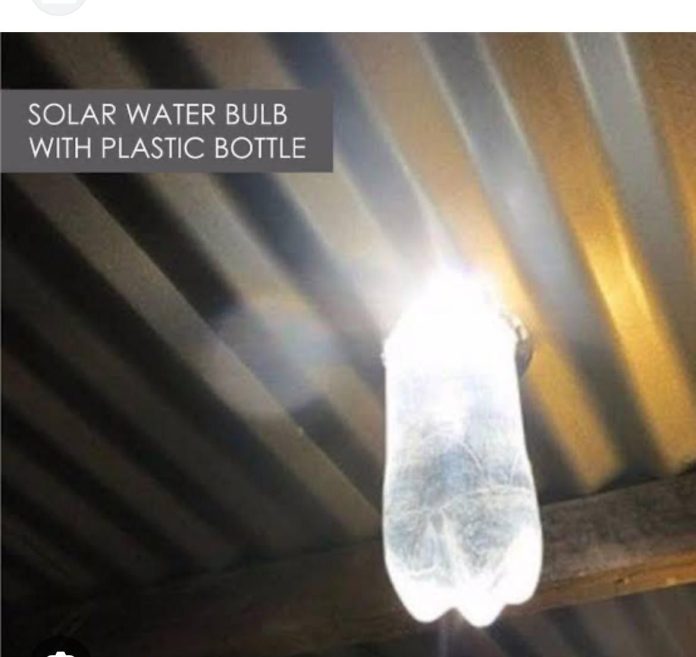In a world grappling with complex challenges, the most impactful solutions can sometimes be elegantly simple. The Liter of Light project, born in the Philippines, exemplifies this perfectly. By harnessing readily available resources and innovative thinking, it transforms lives in remote communities. This blog post explores Liter of Light’s global impact and the broader importance of such grassroots innovations. We’ll delve into similar initiatives, including a personal story, and discuss how these innovations embody the principles of sustainability that are crucial for a better future.
Shining a Light on Communities
The Liter of Light project is a testament to the power of simple yet effective innovation. It aims to provide sustainable lighting solutions to communities lacking access to reliable electricity. The genius lies in using everyday materials and basic science to create a low-cost, eco-friendly lighting system.
A Liter of Light lamp is remarkably straightforward. A plastic bottle filled with water and a touch of bleach is inserted into a rooftop hole. Sunlight refracts through the water, illuminating the room below with the equivalent of a 55-watt bulb. For nighttime use, small solar panels, LED lights, and batteries are added, allowing for light storage and use after dark.
The impact on communities is profound. These simple devices provide a consistent light source in areas with scarce or unreliable electricity. This enables children to study at night, improves household efficiency, and enhances overall quality of life. Additionally, by replacing harmful and expensive kerosene lamps, Liter of Light contributes to better air quality and reduces fire risks.
The project’s success goes beyond technical innovation. It emphasizes community involvement and skills transfer. Locals are trained to build and maintain the lamps, fostering ownership and ensuring long-term sustainability. This approach also generates jobs and builds local capacity.
Liter of Light’s reach extends far beyond the Philippines. It has been implemented in over 15 countries, illuminating the lives of hundreds of thousands. This global success underscores a crucial point: sometimes, the most effective solutions are surprisingly simple.
Lighting Up from Within: A Personal Experience
The spirit of innovation behind Liter of Light isn’t limited to organized initiatives. Individuals around the world often develop similar solutions to address local challenges. A few years ago, I experienced this firsthand when I implemented a comparable lighting solution in my village.
Inspired by utilizing natural resources and repurposing waste, I devised a system to harness sunlight for indoor illumination. Strategically placed mirrors and reflective surfaces redirected sunlight into darker areas of homes. This not only provided better daytime lighting but also reduced reliance on electricity.
The process of developing and implementing this solution was as enlightening as the result itself. Initially intended as a science experiment for my children to demonstrate light reflection and refraction, it quickly evolved into a practical application benefiting the entire community.
What began as a small-scale experiment at home soon caught the interest of neighbors and friends. We worked together to refine the design, making it more efficient and user-friendly. This collaborative process highlighted the importance of community involvement in developing and adopting new solutions.
The impact of this simple innovation was significant. Homes that were previously dark and gloomy became well-lit without needing electric lights. This resulted in energy savings and improved living conditions. Moreover, the project served as an educational tool, sparking interest in science and innovation among the village children. This hands-on experience with problem-solving proved invaluable, potentially inspiring future generations of innovators.
The Power of Simple and Sustainable
The Liter of Light project and similar grassroots initiatives exemplify a broader trend towards simple, sustainable solutions for complex problems. These innovations share key characteristics that contribute to their effectiveness and widespread adoption:
•Cost-effectiveness: Utilizing readily available materials and simple designs keeps costs low, making them accessible to a wider population.
•Waste repurposing: Many of these innovations, like Liter of Light, make clever use of waste materials, reducing costs and contributing to a circular economy.
•Energy efficiency: These solutions often aim to reduce energy consumption or harness renewable energy sources.
•Sustainability: By using local resources and involving communities, these innovations are more sustainable in the long run.
•Ease of use: The simplicity of these innovations makes them easy to understand, implement, and maintain.
These characteristics align with the concept of appropriate technology – small-scale, decentralized solutions that are more likely to succeed in developing contexts than complex alternatives.
The impact of these simple innovations extends far beyond their immediate applications.
They can serve as catalysts for broader social and economic development:
•Empowerment: Local community involvement in development and implementation builds capacity and fosters a sense of empowerment.
•Education: These projects can spark interest in science and innovation, as demonstrated in the personal anecdote.
•Economic opportunities: Implementation and maintenance can create local jobs and stimulate small-scale entrepreneurship.
•Health improvements: Many innovations, like Liter of Light, have indirect health benefits by reducing reliance on harmful alternatives.
•Environmental impact: By promoting resource efficiency and renewable energy use, these innovations contribute to environmental sustainability.
Furthermore, these grassroots innovations often have the potential for scaling and adaptation. The success of Liter of Light in expanding to multiple countries demonstrates how a simple idea can be adapted to different contexts and benefit larger populations.
However, it’s important to acknowledge that while these simple innovations can have a significant impact, they are not a silver bullet for all development challenges. They should be seen as part of a broader ecosystem of solutions,complementing larger-scale interventions and policy changes.
Nurturing Innovation: Building the Ecosystem
The role of supporting ecosystems is crucial for nurturing and scaling these innovations. This includes:
•Funding mechanisms that support grassroots innovators.
•Platforms for knowledge sharing and collaboration to connect innovators and communities.
•Policies that encourage and facilitate local innovation by reducing barriers and creating incentives.
•Educational systems that foster creativity and problem-solving skills, equipping future generations to address challenges with innovation.
Initiatives like 3i Industrial Solutions play a vital role in this ecosystem. By providing support, resources, and platforms for innovators, such organizations can help bridge the gap between grassroots innovation and wider implementation.
Conclusion: A Brighter Future, Ignited by Simplicity
The Liter of Light project and similar grassroots innovations exemplify the transformative power of simple, sustainable solutions. They demonstrate that addressing complex challenges doesn’t always require high-tech, resource-intensive approaches. By harnessing creativity, local knowledge, and readily available resources, it’s possible to develop solutions that are not only effective but also sustainable and scalable.
These innovations embody key principles that are increasingly crucial for sustainable development:
•Resource efficiency and circularity: By making clever use of waste materials and abundant natural resources,these solutions contribute to a more circular, sustainable economy.
•Community empowerment: The emphasis on local involvement and skills transfer ensures that these solutions are not just imposed from outside but are owned and maintained by the communities they serve.
•Accessibility: The low-cost nature of these innovations makes them accessible to even the most resource-constrained communities, addressing issues of equity in development.
•Environmental sustainability: By promoting energy efficiency and renewable energy use, these solutions align with the urgent need to address climate change and environmental degradation.
As we face increasingly complex global challenges, the lessons from these grassroots innovations are more relevant than ever. They remind us of the power of human creativity and resourcefulness, and the potential for local solutions to have global impact.
However, for these innovations to reach their full potential, they need to be supported by enabling ecosystems. By fostering collaboration, knowledge sharing, and supportive policies, we can empower communities to address challenges with ingenuity and build a more sustainable, equitable future, one simple innovation at a time.
Disclaimer: The views and opinions expressed in the article by Dilip Patil, Managing Director of Samarth SSK Ltd., are solely his own.














